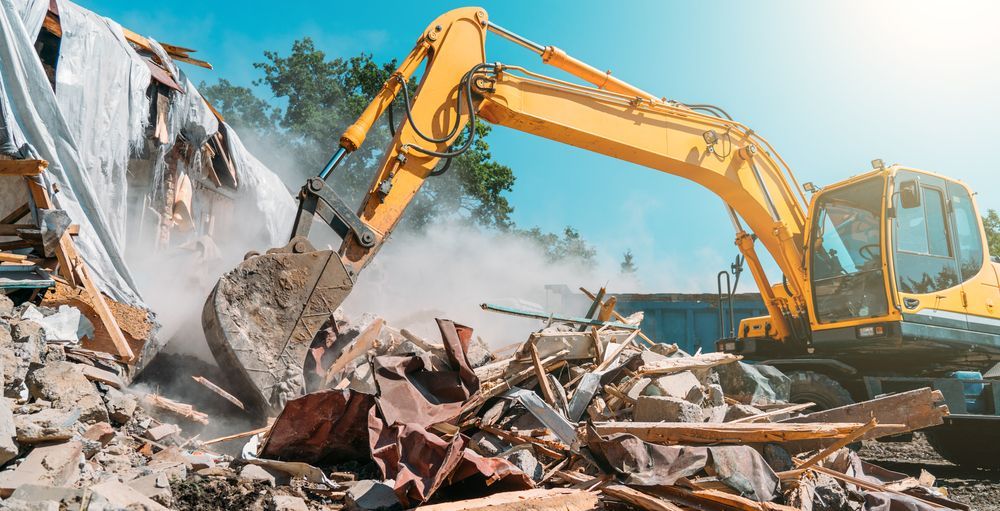THE AGENCY CORP LIMITED
Safety First: Best Methods for Auckland Demolition
The demolition of Auckland goes well beyond basic building destruction. It demands careful design, complete awareness of the special challenges presented by Auckland's metropolitan environment, and respect of safety requirements. Ensuring safety first helps one to protect workers, neighbors, and the surroundings. This is a complete guide on best practices for safe demolition and deconstruction in Auckland.
Understanding Demolition Process
Auckland's demolition process runs at several stages, each with specific safety concerns. These stages cover site planning, preparation, actual deconstruction or destruction, and site cleanup. Every level of management must be perfect to ensure safety and efficacy.
Order and Prepare
The planning stage determines whether any hazards exist and how to solve them. This step of comprehensive site research helps one to understand the materials, surroundings, and any potential building dangers. Key elements of the preparatory process consist in:
Site Study: One can identify hazardous objects such mold, lead, or asbestos by means of a comprehensive site survey. Avoiding health risks totally depends on proper handling and disposal of these goods.
Authorities and Policies: Important is ensuring local rules are followed and that the necessary licenses are acquired. Tight rules for demolition in Auckland give environmental conservation and safety top priority.
Construction of Safety Plans: establishing a complete safety plan with protocols for every phase of the demolition process. Every team member should be part of this approach including emergency procedures, safety gear demands, and roles and functions.
Auckland Deaconess
Deconstruction is another approach of traditional demolition that stresses purposefully demolishing structures to salvage useful pieces. The environmental benefits of this strategy in Auckland are attracting attention for it. Selective dismantling—that is, carefully eliminating features such doors, windows, and fittings before the main construction is taken down—is safety factor for demolition. One must be accurate and knowledgeable if one wants this process to go without mistakes.
Safely handling and keeping recovered items will assist to prevent harm. Big or challenging object management depends on proper lifting techniques and tools.
Waste management is the application of effective methods for handling recyclables and garbage. Particularly in deconstruction activities, appropriate disposal of hazardous materials is rather important.
putting safe demolition methods into use

Once the stages of preparation and design end, the actual demolition or deconstruction can begin. The best rules to ensure safety in this level are the ones below:
Correct Tools:
Using the right tools can help Auckland to keep safety even during demolition. This covers machinery including cranes, excavators, and bulldozers as well as worker personal protective equipment (PPE).
Machining Maintenance: Regular maintenance and mechanical examination guarantees their good functioning condition. Defects in tools can cause mistakes and injury.
Making sure every staff member possesses and makes use of PPE—helmets, gloves, safety goggles, and high-visibility clothing—helps to ensure PPE is the first defense against injuries.
Controlled Demolition Techniques
One guarantees the safety of workers and adjacent buildings by adopting controlled demolition techniques, therefore reducing the likelihood of unexpected collapses.
Sequential demolition removes building in a controlled way starting from the top and working down. This method stops the uncontrollably falling rubbish.
Using explosives asks for exact preparation and execution to control the direction and degree of the collapse. Usually speaking, this approach is used for larger projects and requires certain skills.
Observing and controlling
All during the demolition process, continuous observation and control are rather necessary. Having on-site knowledgeable management ensures that safety protocols are followed and any issues are resolved immediately.
Real-time observing: Technology is applied in real-time site monitoring with security cameras and drones. This guarantees following safety guidelines and aids in the identification of possible hazards.
Safety Assays: Regular safety audits enable process analysis and necessary improvement of policies. These audits point up areas needing improvement and help to maintain high safety standards.
Safety Steps Following Debris
Long after the demolition is complete, safety is still relevant. Post-demolition activities similarly help to ensure the site is safe for further use.
Site Sanitation and Waste Management
Appropriate site cleanup and waste disposal are absolutely essential for both preventing environmental damage and ensuring the safety of next site users.
Good garbage disposal will prevent mistakes in terms of disposal. This covers wherever possible material sorting and recycling.
Safely handling and disposal of dangerous objects discovered during the first site inspection This protects the surrounds and staff against possible damage.
Examining Final Notes from a Site
Through a last site inspection, one ensures that the site is ready for the forthcoming stage of development and that all demolition activities have been carried out safely.
a checklist for a review With a comprehensive checklist, go over every aspect of the site cleanup and destruction. This covers looking for any last-minute hazards or rubbish.
Keeping careful records of the demolition process including licenses, safety precautions, and inspection reports helps to maintain This content will be future reference as well as regulatory compliance depend on.
Finish last.
In Auckland, efficient deconstruction and demolition depend largely on safety. Following top standards in design, construction, and post-demolition operations can assist you to guarantee worker, public, and environmental safety. Giving safety first priority will allow Auckland's urban environment to be sustainably developed and produce a more seamless, more efficient operation whether you are working on a traditional demolition or a deconstruction project.
by THE AGENCY CORP LIMITED on 2024-08-01 01:49:11
No comments yet.